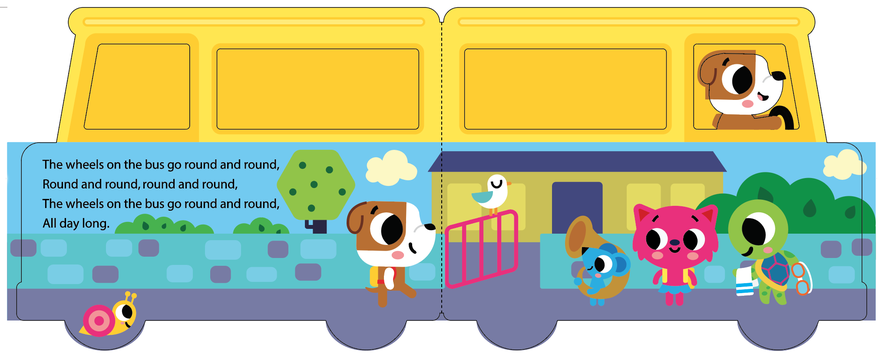Board Books
23 March 2022

In this Buzz series, we're going to take a closer look at a variety of different areas of children's publishing, examining the types of illustration you're likely come across throughout a whole range of diverse book formats! Whether you're starting out as an illustrator and want to find your niche, or you have ambitions to switch up your illustration focus to break into new markets, we hope you'll find this useful and inspiring! We'll be showing off lots of our favourite past projects, too, and chatting to some of the creators - so read on for some exclusive insights…
Where better to start this series than with the very first type of books that many young readers are introduced to - board books!
These small, sturdy books are so named because their pages, rather than being paper, are of a much more durable construction - often thick card or laminated paper. As they're aimed at babies and young toddlers, it's absolutely crucial that they can withstand a bit of rough and tumble! Hard, often rounded pages and a smaller size mean that they're easier for little hands to handle, but they're usually also droppable, chewable, and totally wipe-clean - phew!
In terms of their visuals, these little books have to pack a punch to compete with all the other exciting new objects in a baby or toddler's world. They're often designed with bright, contrasting colours and bold, simple shapes to lead the eye, and minimal (if any) text. Their aim is to familiarise these youngest readers with the basic shapes of words, and hopefully nurture an early love of books which will inspire them through their own independent reading journey later on.
Illustration for board books is, of course, absolutely vital - and we're not completely biased! For little ones who can't yet identify words, the artwork is crucial for their understanding of the book's theme. Holding attention is key, so the images help with following along with whoever is reading with them, enabling them to develop focusing skills too. But it's not just illustrations alone that do this - there can be a fun, tactile element to board books, and this is where publishers can really push the boundaries! This could be textured inserts which offer another sensory dimension, encouraging kids to interact and play. But it could also be pop-ups, peep-throughs, flaps, and even attached puppet characters to bring the book to life.
We spoke to Beehive illustrator, Fhiona Galloway, about her approach to illustrating board books. With a wealth of experience in this genre, Fhiona's eye-catching, graphic forms lend themselves perfectly to titles for the littlest readers. So what makes an illustrator successful in this field?
"Well I guess the first thing I would say is you have to have a passion for it! A drive that makes you keep wanting to illustrate fun, cute characters and imagine the world they inhabit."

Fhiona's Toddle Time Squeaky Nose books, above, for Lake Press are a great example of an interactive board book where the characters are front and centre, with a coherent theme across the whole set. The overall look of the illustrations are also an important consideration. Of her process, Fhiona says:
"I switch between flat colour and textural illustration depending on what a client requires. I generally start by sketching ideas on paper or my iPad then bring the sketches into Adobe Illustrator to draw in vector. I love a clean graphic which I think is popular for very young children's books because it conveys the information needed easily and simply for young minds to understand, enjoy and learn from."
An exciting feature of these hard board books is the ability to create 'shaped' elements - or, of course, the whole book can be a totally unique shape! Die cutting can create 'windows' in the pages, allowing readers to peep through to a portion of the next spread. This is where an illustrator really needs to have an understanding of the production process, and be confident working with the designer's die cutting template to ensure the mechanics of the book work well. Visualising the end product is key! Occasionally, a dummy might be produced and assembled, and the publisher may even provide a video of more complicated template concepts to show the illustrator in 3D. Below is a spread from The Wheels on the Bus, illustrated by Conor Rawson and also from Lake Press - as well as the bright, eye-catching character design, you can also see the die cutting template which indicates those elements that will be shaped or cut out.

So, there we have it! Although at first glance, board books might appear fairly simple, they have to pack a punch and work hard to engage young readers, and the illustration content is absolutely essential to their success! Artists working on board books need to have a good sense of what's appropriate for the age group, but also a good understanding of the production of such titles, especially when there are extra interactive elements to consider.
If you'd like to see Beehive's selection of artwork for board books, why not take a look at our collection of illustrations for Babies and Young Children?




